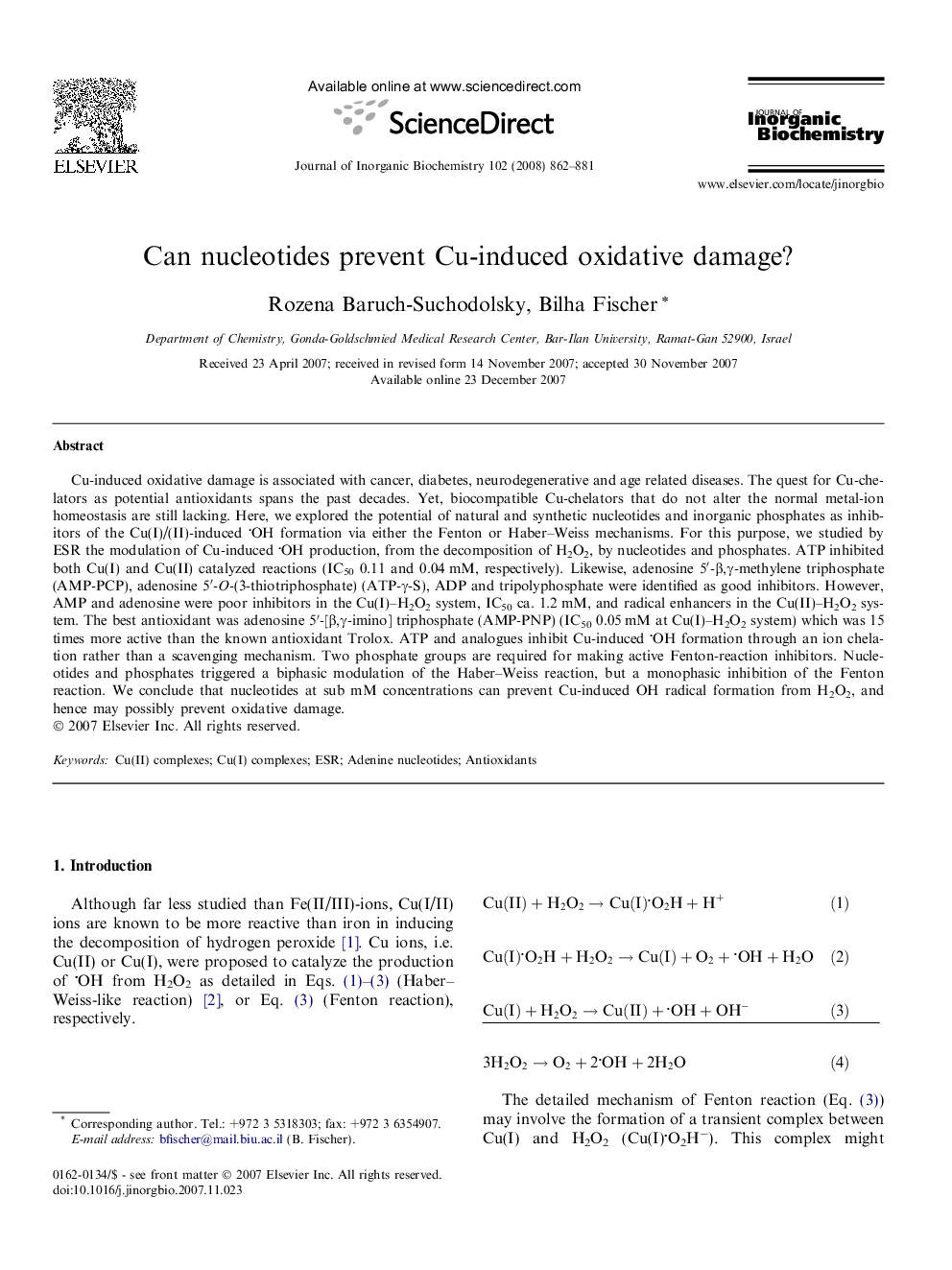| کد مقاله | کد نشریه | سال انتشار | مقاله انگلیسی | نسخه تمام متن |
|---|---|---|---|---|
| 1316953 | 976494 | 2008 | 20 صفحه PDF | دانلود رایگان |

Cu-induced oxidative damage is associated with cancer, diabetes, neurodegenerative and age related diseases. The quest for Cu-chelators as potential antioxidants spans the past decades. Yet, biocompatible Cu-chelators that do not alter the normal metal-ion homeostasis are still lacking. Here, we explored the potential of natural and synthetic nucleotides and inorganic phosphates as inhibitors of the Cu(I)/(II)-induced OH formation via either the Fenton or Haber–Weiss mechanisms. For this purpose, we studied by ESR the modulation of Cu-induced OH production, from the decomposition of H2O2, by nucleotides and phosphates. ATP inhibited both Cu(I) and Cu(II) catalyzed reactions (IC50 0.11 and 0.04 mM, respectively). Likewise, adenosine 5′-β,γ-methylene triphosphate (AMP-PCP), adenosine 5′-O-(3-thiotriphosphate) (ATP-γ-S), ADP and tripolyphosphate were identified as good inhibitors. However, AMP and adenosine were poor inhibitors in the Cu(I)–H2O2 system, IC50 ca. 1.2 mM, and radical enhancers in the Cu(II)–H2O2 system. The best antioxidant was adenosine 5′-[β,γ-imino] triphosphate (AMP-PNP) (IC50 0.05 mM at Cu(I)–H2O2 system) which was 15 times more active than the known antioxidant Trolox. ATP and analogues inhibit Cu-induced OH formation through an ion chelation rather than a scavenging mechanism. Two phosphate groups are required for making active Fenton-reaction inhibitors. Nucleotides and phosphates triggered a biphasic modulation of the Haber–Weiss reaction, but a monophasic inhibition of the Fenton reaction. We conclude that nucleotides at sub mM concentrations can prevent Cu-induced OH radical formation from H2O2, and hence may possibly prevent oxidative damage.
Journal: Journal of Inorganic Biochemistry - Volume 102, Issue 4, April 2008, Pages 862–881